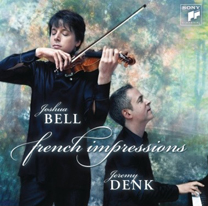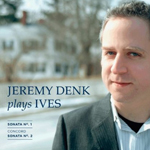There is no emotional wall that misery cannot demolish. (Happiness, I’m not so sure.) A few days ago, I was playing through Beethoven Op 10 #1 (the C minor one), and I had the disheartening feeling that it was “classical,” tame; that in comparison to the Bach Partitas I had been playing, its universe was too partial, too contingent. (Bach had come to seem more “romantic” than the Beethoven!) But I had felt the shivers of this Sonata before; at 22 I found it spellbinding; it has always been a favorite of mine, for various reasons; I tried to re-sell myself on it, to look at it as revolution, and not as piece of the past.
But to no avail; I could not force conviction.
Fast forward through the visit of Eighth Blackbird to town, and commensurate carousing. Two nights of late meals, perhaps a drink or two too many, and the kind of sleep that leaves you feeling faintly blended or pureed in the morning. (As if you yourself were the frozen margarita you ingested 9 hours previous.) And on the third day … I awoke with a vision. Advils churning in my stomach, water boiling on the stove, I played the opening C minor chord of the sonata.
Thud. Yes, that was right. The chord had a certain thickness, a toughness, that had eluded me earlier. Though my water whined, and coffee longed in its vacuum-sealed bag to be brewed, I kept at the piano, because I had found an interface between sound and feeling. The synapse snapped. Even the rest–the short silence between the first chord and the next ascending arpeggio–seemed to have a tremendous intensity. (Nothing like a headache to make you appreciate the value of the silences.) Now the C minor chord was “its own man,” not just one of a generic class of typical classical chords (though it is this TOO); but now, I took it personally. Anger, despair, agitation–I took out my anger on myself, and I refused to get up from the piano until I was satisfied. What fun. The closing theme of the expo and recap: a wonderful series of hammer chords; I hammered them out (take that! and that! and that!) and even played that section several times to maximize my own suffering. There is also a tremendous sadness behind the anger. And the beginning of the slow movement, which is “just” I-V-I, tonic-dominant-tonic: its prayerfulness answered the first movement, seemed so deeply, profoundly necessary, and I was more patient suddenly with it, able to feel an Adagio where before I had leaned towards Andante … Like an actor, I had my “motivation;” I had found inspiration in my own bleary, crusty eyes.
Today I can rehear, recapture that feeling, in bits and pieces, though I am comparatively physically well. (Mentally?) The memory of its crackle endures. I know what it sounded like; I know the physical things I did at the piano to create the sounds, and what differentiated those motions/sounds from the everyday. Thanks, stupid carousing self; the bar is set; the goal is there. Now some serious sober work is required to recapture it, to build it into consistent reality.
In a wonderful passage of The Master and Margarita, Styopa awakes with a terrible hangover to find himself in the company of the devil, who recommends “vodka and a spicy snack.” Styopa as I recall takes his advice, and as I recall meets an untimely fate. Ponder on this, oh irresponsible blogger. Caveat: I am not “recommending” the method above for pianists seeking inspiration; but I feel sure I was visited that morning by some force… helpful or destructive? Only the devil knows for sure.


